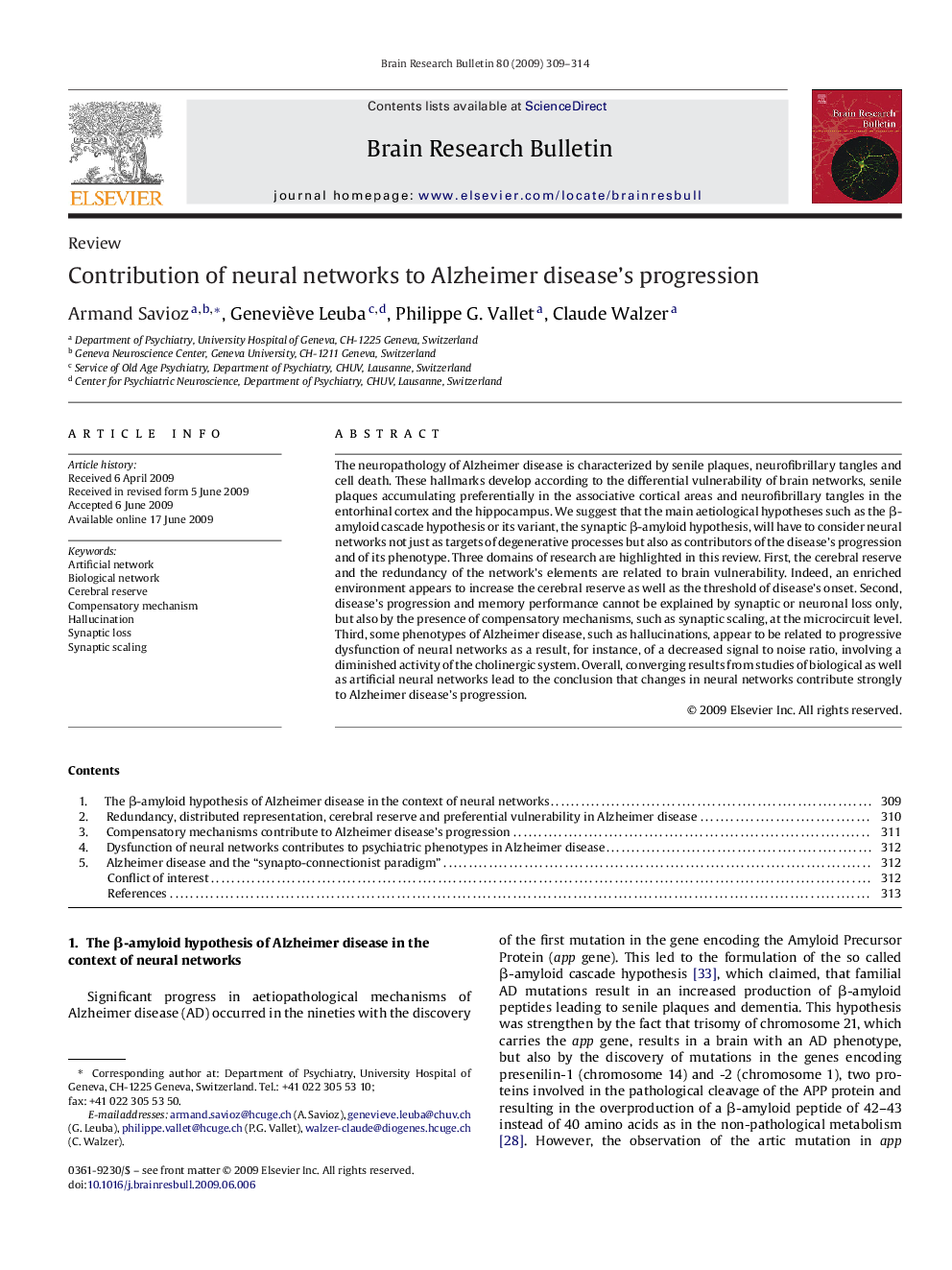| Article ID | Journal | Published Year | Pages | File Type |
|---|---|---|---|---|
| 4319476 | Brain Research Bulletin | 2009 | 6 Pages |
The neuropathology of Alzheimer disease is characterized by senile plaques, neurofibrillary tangles and cell death. These hallmarks develop according to the differential vulnerability of brain networks, senile plaques accumulating preferentially in the associative cortical areas and neurofibrillary tangles in the entorhinal cortex and the hippocampus. We suggest that the main aetiological hypotheses such as the β-amyloid cascade hypothesis or its variant, the synaptic β-amyloid hypothesis, will have to consider neural networks not just as targets of degenerative processes but also as contributors of the disease's progression and of its phenotype. Three domains of research are highlighted in this review. First, the cerebral reserve and the redundancy of the network's elements are related to brain vulnerability. Indeed, an enriched environment appears to increase the cerebral reserve as well as the threshold of disease's onset. Second, disease's progression and memory performance cannot be explained by synaptic or neuronal loss only, but also by the presence of compensatory mechanisms, such as synaptic scaling, at the microcircuit level. Third, some phenotypes of Alzheimer disease, such as hallucinations, appear to be related to progressive dysfunction of neural networks as a result, for instance, of a decreased signal to noise ratio, involving a diminished activity of the cholinergic system. Overall, converging results from studies of biological as well as artificial neural networks lead to the conclusion that changes in neural networks contribute strongly to Alzheimer disease's progression.
